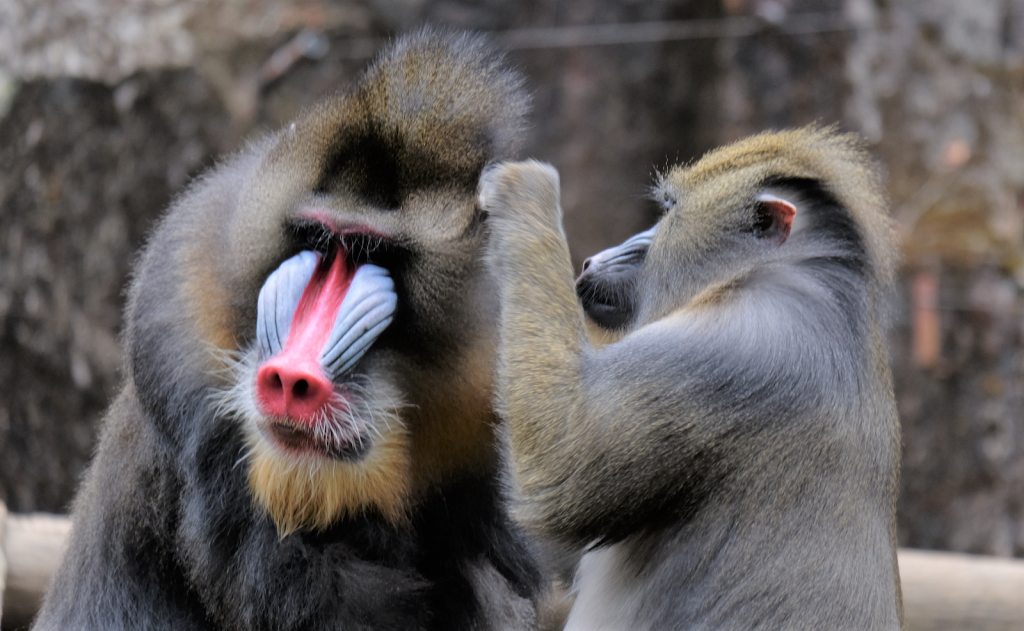
Forager ants do it, vampire bats do it, guppies do it, and mandrills do it. Long before humans learned about and started “social distancing due to COVID-19,” animals in nature intuitively practiced social distancing when one of their own became sick.
In a new review published in Science, Dana Hawley, a professor of biological sciences in the Virginia Tech College of Science and colleagues from the University of Texas at Austin, University of Bristol, University of Texas at San Antonio, and University of Connecticut have highlighted just a few of the many non-human species that practice social distancing as well as lessons learned from their methods to stop the spread of bacterial, viral, and parasitic infections.
“Looking at non-human animals can tell us something about what we have to do as a society to make it such that individuals can behave in ways when they are sick that protect both themselves and society as a whole”, said Hawley.
“Staying home and limiting interactions with others is an intuitive behavioral response when we feel sick and one that we see across many types of animals in nature,” Hawley said. “But humans often suppress this instinct, at great potential cost to ourselves and our communities, because of pressures to continue working or attending classes even while sick.”
We all have had that experience of feeling sick. We may feel lethargic and just can’t seem to muster the energy to get out of bed or hang out with friends. Although we may not know it, we are practicing a form of social distancing. Since we are not actively trying to avoid people and just rolling with the punches of general malaise, Hawley and co-authors refer to this as “passive social distancing.” Of course, this has been observed in non-human species as well.
Vampire bats, who feed solely on the blood of other animals, have been well studied because they are highly social, compared to their fruit- and insect-eating bat relatives. Since blood is not nutritional and difficult to find most days, the bats form strong social bonds by sharing food and grooming or licking and cleaning each other’s fur.
To learn more about their “sickness behavior,” or how their behavior changes in response to infection, researchers injected the bats with a small piece of cell membrane from a gram-negative bacteria known as lipopolysaccharide. The harmless substance triggers an immune response and their sickness behaviors, such as decreased activity and decreased grooming without actually exposing them to a pathogen.
“Passive social distancing in vampire bats is a ‘byproduct’ of sickness behavior,” said Sebastian Stockmaier, who led the review while a Ph.D. student at the University of Texas at Austin where he is still affiliated. “For instance, sick vampire bats might be more lethargic so that they can divert energy to a costly immune response. We have seen that this lethargy reduces contact with others and that sick vampire bats groom each other less.”
Mandrills also exhibit grooming behaviors in order to maintain their social bonds as well as their hygiene. However, these highly social primates are strategic about their social distancing behaviors. Because their grooming behaviors are important to keep their standing in society, they avoid contagious group mates, while occasionally increasing their risk of infection by continuing to groom their infected close relatives.
On the other hand, many types of ants practice a form of active social distancing. Over the course of evolution, some ant species have adapted to abandon their tight knit-groups when they are feeling sick. In these cases, the infected individual’s self-sacrifice is seen as an act of public good to protect the rest of the colony and carry forth the genes that will keep the closely related colony thriving in the future.
But there are other cases where the healthy animals go out of their way to exclude sick members from the group or by avoiding contact with them altogether.
Bees are another group of social insects whose main goal is to do everything for the greater good of the hive and their queen. So when infected bees are detected within the hive, healthy bees have no choice but to exclude the infected bees — by aggressively kicking them out of the hive.
In other species, the healthy individuals are the ones to leave the group to protect themselves from disease, but often at great cost. To reduce their risk of catching or transmitting a virus, healthy Caribbean spiny lobsters abandon their den when they detect an infected group member in it. Not only does this result in the loss of protection within the group and their den, but they are also exposing themselves to deadly predators in the open ocean. But for them, it is worth this risk to avoid a highly lethal virus.
“COVID-19 has really highlighted the many ways that we use behavior to deal with disease,” said Hawley. “I think that we have all unconsciously used these types of behaviors throughout our lives, and it is only just now coming into focus how important that these behaviors are in protecting ourselves from getting sick.
As new mutants of the SARS-Cov-2 virus arise, humans will have to continue to wear masks to protect themselves and others and social distance. Unlike animals in nature, humans have developed technology like Zoom to create social connections and bridges while they are physically distancing themselves from others.
— Written by Kendall Daniels



